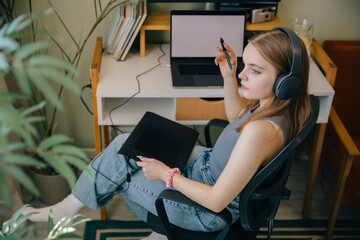The best way to get creative ideas for your website design is to practice every day. Just like musicians who practice a few songs a day, it is essential to find a rhythm that will help you come up with cool web designs.
It is also important to establish some constraints. Many website visitors are familiar with specific design standards, and you risk confusing them or even alienating them if you try to be too innovative.

Animations
Animation is a powerful tool that can increase engagement and foster visitor interactions. It can also boost conversion rates by guiding visitors toward specific actions. For example, a “Sign Up” button that pulses or changes color can attract users’ attention and make it more likely that they will click.
When used sparingly and with purpose, animations can elevate digital experiences, communicate brand values, and create engaging and memorable user journeys. When implemented poorly, however, they can create accessibility issues and slow down website performance.
To ensure that your animations are effective and impactful, they should be designed to align with the overall aesthetic of your site and your brand’s tone of voice. For instance, if your business has a playful ethos, animated elements that reflect that can be a great way to showcase your unique character and identity. On the other hand, if your brand has a more formal or serious tone, sleek and minimalistic animations might be a better option. In any case, be sure to test your animations extensively across multiple devices and browsers before deploying them on live sites.
Illustrations
Illustrations are hand-drawn or digital artwork that communicate a message or story. They may not incorporate text, but visual artwork is their primary focus. They can be used for a variety of purposes, including advertising and marketing. They are also often used as decorative elements on literary pieces.
For example, Samuel Day’s imaginative website begins with a theatrical curtain that dissolves to welcome you into his creative world. A scroll-triggered animation reveals an illustrated Sam with his head split in two, then transports you into a series of full-screen illustrations. Each slide presents a different project, and clicking on it takes you deeper into the work.
This approach is great for demonstrating design aesthetics and creating mood boards. You can use it to identify your favorite design styles and find inspiration for future projects. Try experimenting with different textures, shapes, and colors to create the perfect moodboard for you. Moodboards can also help you narrow down your ideas and select the best ones for client projects. This is a quick and easy way to practice your creativity as a web designer.
Colors
Colors are one of the most important aspects of a website. A strange, incoherent color scheme can make a site look unprofessional, while a beautiful, cohesive palette can create a sense of sophistication and trust.
Cool colors (blues, greens, purples) are typically more subdued than warm hues and tend to evoke feelings of calmness and authority. These colors are also associated with nature and the outdoors, making them ideal for websites that want to communicate a sense of professionalism or natural comfort.
Warm colors (oranges, yellows) are typically brighter and more vibrant than cool hues. These colors are often associated with energy and excitement, making them ideal for websites that want to convey a sense of urgency or enthusiasm.
This website by Kelsey Dake features a bold, colorful design that perfectly showcases her creative illustration work. The vibrant hues are balanced out by a light grey background and plenty of white space, keeping the design feeling clean and modern. The site is also responsive and mobile-friendly, making it a great example of how a website can use color to its advantage without becoming overwhelming or confusing.
Layouts
A layout is a structure for arranging visual elements on a page or screen. It includes the principles of balance, contrast, and alignment, and is important for creating clear and effective designs. Layouts are also used to communicate hierarchy through the use of space, colour, and typography.
Depending on the content and goals of your design, there are many different layout styles that you can use. For example, F-pattern layouts are perfect for reading and scrolling text, card-based layouts are effective for presenting modular content, and masonry layouts are great for providing visual definition and allowing users to navigate through content easily.
You can also create a Z-layout, which guides the viewer’s eye in a “Z” shape from top to bottom and left to right. This is ideal for homepages and landing pages that lead users smoothly from introduction to call to action. Similarly, timeline and dashboard layouts present information clearly for easy understanding, perfect for data-heavy applications. Lastly, overlay layouts enable users to interact with a separate modal while still keeping the main interface visible.
A/B Testing
A/B testing isn’t just for tweaking a single page; it can also be used during or after a website redesign to measure which elements drive conversions. This process allows you to make data-driven decisions and reduce risk based on statistically significant results.
For example, your team can test different headlines to see which one catches visitors’ attention and compels them to convert. You can also use insights from heatmaps, clickmaps, and scrollmaps to analyze dead clicks and other distractions that may be causing visitors to leave your site.
Once you’ve run your A/B tests, it’s important to understand how to interpret the results. You’ll want to look at metrics like percentage increase, confidence level, and the impact on other site goals.
While most companies conduct ad-hoc A/B testing, implementing a formalized program can improve the quality of your data and insights. A tool like Fullstory can help you take your A/B testing program to the next level. Learn more about how Fullstory can drive growth through experimentation-led optimization here.